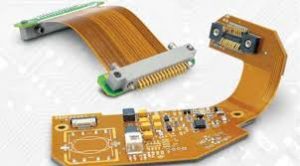Flexible PCBs for Space
The harsh environments in space pose a formidable challenge for the development of electronic systems. Engineers must strike a balance between size and functionality to make sure that the systems can operate in these extreme conditions without fail. Achieving this goal requires a wide range of advanced materials, effective thermal management strategies, radiation-resistant components and scrupulous PCB design methodologies. Among these are flexible circuits, which can handle vibration and mechanical stresses during launch and deployment with greater ease than their rigid counterparts.
Flexible circuits are a vital component for a number of space applications. They can offer a more streamlined and compact layout than rigid boards while providing high-fault tolerance. The physical adaptability of flex circuits is also advantageous for space applications, as they can be formed into odd shapes and accommodate multiple connectors within a limited footprint.
Moreover, flex circuits are much lighter than their rigid counterparts. Compared to the conventional thick substrates used in traditional PCBs, flex circuits use thinner films, which results in significant weight reduction. This is especially important for space applications, where every kilogram counts. In addition, flex circuits can be warped and bent without breaking or losing functionality. This feature makes them ideal for drones and other unmanned devices that require the ability to withstand harsh environmental conditions.
There are several different types of flexible pcb, including single-layer, double-sided, multi-layer and high-frequency boards. Each type varies in the number of conductive layers, the construction and materials used and whether they include or not plated-through holes (PTH).

Flexible PCBs for Space Applications
Flex PCBs can be made with a wide range of materials, including Polyimide and upgraded Polyimide. The latter is a stronger material that retains its flexibility after thermosetting, whereas the standard version softens under heat. Additionally, the choice of copper foil is critical for flex PCBs. Conductors are typically made of electrodeposited (ED) or rolled and annealed (RA) copper foil. ED copper foil has a fish scale structure that leads to an even and flat surface, while RA copper foil has a smooth texture and is accessible for roughening and etching processing.
The design process for a flex circuit is similar to that of a regular PCB, with the exception that fabrication drawings must show the layer stack-up and material properties for each section of the board. For example, single-layer flex PCBs have a simple stack-up that comprises an adhesive layer and a layer of polyimide followed by the copper.
In order to ensure that the PCB is able to withstand dynamic forces, the solder joints and connections must be robust. Using flexible PCBs in your aerospace projects will help to reduce the risk of failure by eliminating high-failure points such as solder joints and crimps. This is particularly important in the case of a spacecraft, where reliability is crucial for survival in a hostile environment. For more information on the benefits of using a flex circuit, contact us today! We’d be happy to discuss your project in detail and provide a quote.
One common failure mode of flexible PCBs is mechanical stress-induced damage. Due to their flexibility, these boards are often subjected to bending, twisting, and flexing during installation, operation, and maintenance. Over time, this mechanical stress can lead to the delamination of layers, cracks in conductive traces, and ultimately, open or short circuits. Proper design considerations, such as incorporating stress relief features and selecting suitable materials, can mitigate these issues.
